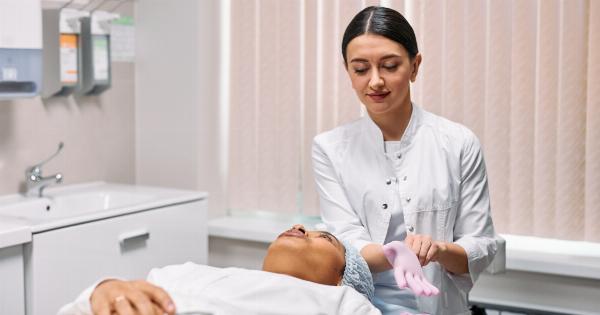Candidiasis, also known as yeast infection, is a common fungal infection caused by the overgrowth of Candida, a type of yeast. It can affect various parts of the body, including the mouth, throat, genital area, and skin.
While mild cases of candidiasis are often easily treated, recurrent or systemic infections may require medical intervention.
Symptoms of Candidiasis
Candidiasis can manifest with different symptoms depending on the affected area. Here are some common symptoms associated with various types of candidiasis:.
1. Oral Candidiasis (Thrush)
Oral candidiasis, commonly known as thrush, can cause the following symptoms:.
- White or yellowish patches on the tongue, inner cheeks, gums, or roof of the mouth.
- Soreness or burning sensation in the mouth.
- Difficulty swallowing or a feeling of food being stuck in the throat.
2. Genital Candidiasis
Genital candidiasis, also referred to as a yeast infection, can lead to the following symptoms:.
- Itching and irritation in the genital area.
- Burning sensation during urination or intercourse.
- Thick, white, cottage cheese-like discharge.
- Redness, swelling, or soreness of the vulva or vagina.
3. Cutaneous Candidiasis
Cutaneous candidiasis affects the skin and may cause the following symptoms:.
- Red, itchy rash with raised borders.
- Pimples, blisters, or pustules that may ooze fluid.
- Satellite lesions (smaller patches of rash surrounding the main rash).
4. Invasive Candidiasis
Invasive candidiasis is a severe form of the infection that can affect the bloodstream or internal organs. This condition is more commonly observed in individuals with weakened immune systems. Symptoms of invasive candidiasis may include:.
- Fever and chills.
- Low blood pressure.
- Rapid breathing.
- Organ-specific symptoms, such as abdominal pain in the case of abdominal candidiasis.
Quick Test for Candidiasis
While a definitive diagnosis should be made by a healthcare professional, you can perform a quick test at home to determine if you might have candidiasis. This test is known as the saliva test and involves the following steps:.
Step 1: Prepare for the Test
Ensure you have not eaten or drunk anything for at least an hour before taking the test. This is important as food and beverages can affect the results of the test.
Step 2: Gather Materials
You will need a clear glass of water and a timer for this test.
Step 3: Spit into the Glass
Fill your mouth with saliva and then spit into the glass of water. Make sure to produce enough saliva to clearly see it in the glass.
Step 4: Observe the Results
Leave the glass undisturbed for about 30 minutes and observe the changes in the saliva. Here are some possible outcomes and what they may indicate:.
Outcome 1: Saliva Stays on Top
If the saliva remains floating on top of the water without any significant changes, it is likely that you do not have a candidiasis overgrowth.
Outcome 2: Saliva Sinks or Becomes Strings
If the saliva sinks to the bottom of the glass, develops string-like formations, or cloudy particles within 30 minutes, it could indicate a candidiasis overgrowth.
It is important to note that this test alone is not a definitive diagnosis, and further medical evaluation is recommended.
Seeking Medical Advice
If you suspect you have candidiasis based on the quick test or experiencing consistent symptoms associated with the infection, it is crucial to consult a healthcare professional.
They will be able to provide an accurate diagnosis and recommend appropriate treatment options.
Treatment for Candidiasis
Treatment for candidiasis depends on the type and severity of the infection. Mild cases of candidiasis can often be treated with over-the-counter antifungal medications, such as topical creams or suppositories.
However, recurrent or persistent infections may require prescription-strength antifungal medications or a combination of treatments.
Additionally, it is essential to address any underlying factors that may contribute to candidiasis, such as maintaining good hygiene, avoiding excessive moisture in affected areas, and managing conditions like diabetes that can increase the risk of fungal infections.
Preventing Candidiasis
Prevention plays a crucial role in reducing the risk of candidiasis. Here are some preventive measures you can take:.
- Maintain good personal hygiene, especially in the genital and oral areas.
- Avoid using douches, bubble baths, and strong soaps in the genital area.
- Wear loose-fitting, breathable clothing to promote air circulation and prevent excessive moisture.
- Change out of wet swimsuits or sweaty clothes promptly.
- Practice safe sex and ensure proper lubrication during intercourse to reduce genital irritation.
- Follow a balanced diet, including probiotics like yogurt, to support healthy bacteria in the body and maintain a strong immune system.
Conclusion
While a quick test can provide initial insight, it is essential to consult a healthcare professional for a definitive diagnosis of candidiasis.
Understanding the symptoms and risk factors, along with following preventive measures, can help reduce the likelihood of developing candidiasis. Prompt treatment and management are crucial in resolving the infection and preventing its recurrence.



























